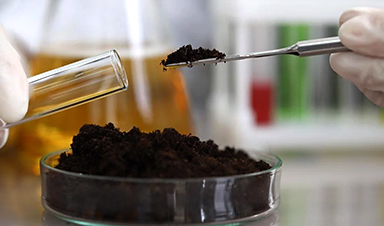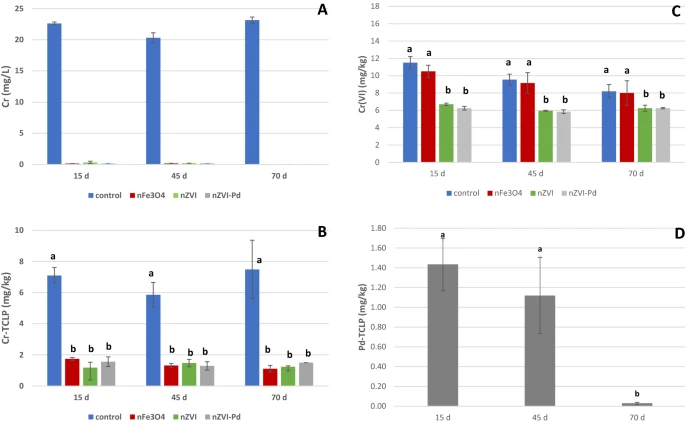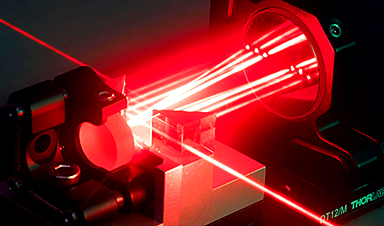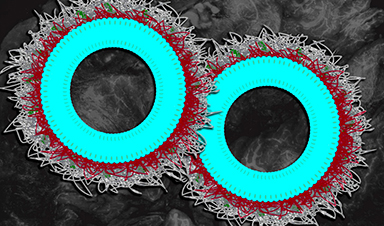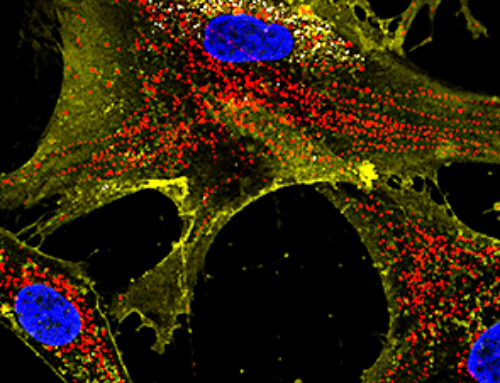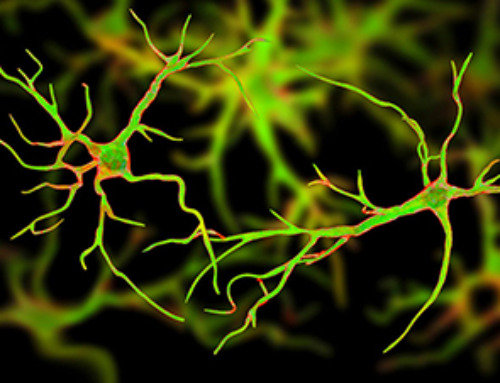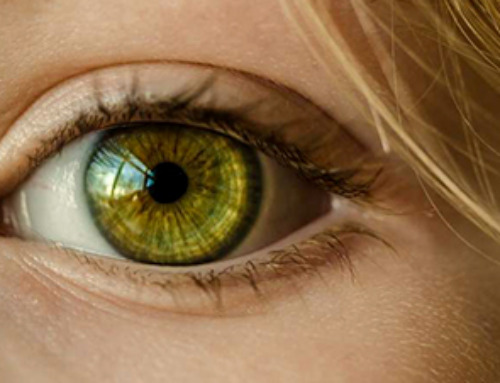The impact of different kinds of commercial metallic nanoparticles (nanosized zero valent iron (nZVI), bimetal nZVI-Pd, and nano-magnetite (nFe3O4)) for the recovery of soil co-contaminated with Cr and PCBs are evaluated in a recent article published in the journal Scientific Reports.
The implementation of restoration solutions for soil degraded with a combination of pollutants (metal(loid)s and chemical products) has rarely been studied. The results suggest that the introduction of nZVI or nZVI-Pd, as well as pseudo-anaerobic settings, may well be employed to restore Cr and PCB-contaminated soil.
Soil Contamination Due to Chromium
Soil contamination is a global problem. It degrades the ecological functions supplied by the soil, reduces agricultural production, and has a negative influence on human health.
The bulk of contaminants come from man-made sources such as commercial activities, quarrying, public transit, and sewer waste treatment on soil.
The primary pollutants detected in European soils are metals and metalloids. As environmental pollutants, they are non-biodegradable and hence linger for long durations.
Due to its highly anti-corrosive characteristics, chromium (Cr) is extensively employed in a variety of industrial applications. Metallurgical operations, tanneries, wood processing, galvanizing, and petrochemical industries are just a few examples.
Cr (III), which presents as impermeable oxide and hydroxide cations, and Cr (VI), which emerges as oxyanion, are by far the most frequent types of Cr found as soil minerals.
Cr (III) is rejected by the electrostatic repulsion of soil and so stays in soil solution, accessible to crops and other creatures. As a result of its high mobility and bioavailability, Cr (VI) is 1000 times more hazardous than Cr (III).
Polychlorinated Biphenyls (PCBs): A Major Soil Pollutant
Persistent organic pollutants (POPs), like metallic materials, are biological chemical compounds that are permanent, extremely poisonous, and micropollutants, posing a concern to the ecosystem.
PCBs are a class of synthetic organic chemicals classified as POPs by the Stockholm Convention of 2001 owing to their high public health hazard and breakdown resilience. PCBs may be created inadvertently as by-products in a variety of biochemical procedures that use chlorine and hydrocarbons.
PCBs have been linked to spillage from power equipment, waste distribution to soil, garbage furnace fumes, leaks during transportation, evaporation and sedimentation from surface waterways, and leakage from improper treatment and disposal.
Use of Nanoparticles for Soil Remediation
Compared to conventional physio-chemical approaches, nanoscience has recently allowed the development of new cost-effective and ecologically sound restoration solutions.
The increased particular surface area of nanoparticles leads to faster reaction kinetics with contaminants. Many distinct nanomaterials, such as carbon nanotubes, inorganic materials, and activated carbons, have been explored for cleanup purposes, but nano zero valent iron (nZVI) particulates are the most extensively deployed.
The application of magnetized nanomaterials, such as nano magnetite (nFe3O4), for the rehabilitation of metal(loid) contaminated streams has gained popularity in recent decades. This is because of their higher absorption capabilities and magnetic characteristics, which allow for better membrane separation from the solid material.
The major goal of this research was to compare the efficacy of three kinds of commercial magnetite nanoparticles (nZVI, nZVI-Pd, and nFe3O4) for the restoration of industrialized soil polluted with Cr and PCBs.
(A) Mean concentration of Cr (mg/L) in the aqueous extracts at the different sampling times. (B) Mean concentration of Cr (mg/kg) in TCLP extracts at the different sampling times. (C) Mean concentration of Cr(VI) (mg/kg) in soil samples at the different sampling times. For each sampling time, bars with the same letter do not differ significantly (p < 0.05). (D) Mean concentration of Pd (mg/kg) in TCLP extracts at the different sampling times for nZVI-Pd treated soils. Bars with the same letter do not differ significantly (p < 0.05). © Gil-Díaz, M., Pérez, R., Alonso, J., Miguel, E., Diez-Pascual, S. and Lobo, M., (2022)
Research Findings and Conclusion
When nZVI, nZVI-Pd, or nFe3O4 were added to soil polluted with Cr and PCBs, the leakage of Cr in the soil was greatly decreased, and the immobilization remained stable over a period of 70 days under the simulated conditions.
When contrasted to nFe3O4, Te nZVI and nZVI-Pd were more successful in converting Cr (VI) to Cr (III). The PCB levels in soils sprayed with the three kinds of iron nanoparticles fell considerably after 15 days of engagement between soil and nanoparticles.
Control soils demonstrated a drop in PCBs content during the 45-day sample period due to environmental remediation, reaching levels comparable to those seen in soil amended with nZVI and nZVI-Pd. In this case, biodegradation might be possible if the soil was just poisoned with PCBs, but not if it also included metals like Cr.
Tus, nZVI-based nanoparticles show modest performance in PCB-polluted soil cleanup. Both nZVI particles, on the other hand, achieved effective Cr absorption in soils.
The findings show that the introduction of nZVI or nZVI-Pd, as well as pseudo-anaerobic settings, might be employed to recover Cr and PCB-contaminated soils.
News
Multifunctional Nanogels: A Breakthrough in Antibacterial Strategies
Antibiotic resistance is a growing concern - from human health to crop survival. A new study successfully uses nanogels to target and almost entirely inhibit the bacteria P. Aeruginosa. Recently published in Angewandte Chemie, the study [...]
Nanoflowers rejuvenate old and damaged human cells by replacing their mitochondria
Biomedical researchers at Texas A&M University may have discovered a way to stop or even reverse the decline of cellular energy production—a finding that could have revolutionary effects across medicine. Dr. Akhilesh K. Gaharwar [...]
The Stunning New Push to Protect the Invisible 99% of Life
Scientists worldwide have joined forces to build the first-ever roadmap for conserving Earth’s vast invisible majority—microbes. Their new IUCN Specialist Group reframes conservation by elevating microbial life to the same urgency as plants and [...]
Scientists Find a Way to Help the Brain Clear Alzheimer’s Plaques Naturally
Scientists have discovered that the brain may have a built-in way to fight Alzheimer’s. By activating a protein called Sox9, researchers were able to switch on star-shaped brain cells known as astrocytes and turn them into [...]
Vision can be rebooted in adults with amblyopia, study suggests
Temporarily anesthetizing the retina briefly reverts the activity of the visual system to that observed in early development and enables growth of responses to the amblyopic eye, new research shows. In the common vision [...]
Ultrasound-activated Nanoparticles Kill Liver Cancer and Activate Immune System
A new ultrasound-guided nanotherapy wipes out liver tumors while training the immune system to keep them from coming back. The study, published in Nano Today, introduces a biodegradable nanoparticle system that combines sonodynamic therapy and cell [...]
Magnetic nanoparticles that successfully navigate complex blood vessels may be ready for clinical trials
Every year, 12 million people worldwide suffer a stroke; many die or are permanently impaired. Currently, drugs are administered to dissolve the thrombus that blocks the blood vessel. These drugs spread throughout the entire [...]
Reviving Exhausted T Cells Sparks Powerful Cancer Tumor Elimination
Scientists have discovered how tumors secretly drain the energy from T cells—the immune system’s main cancer fighters—and how blocking that process can bring them back to life. The team found that cancer cells use [...]
Very low LDL-cholesterol correlates to fewer heart problems after stroke
Brigham and Women's Hospital's TIMI Study Group reports that in patients with prior ischemic stroke, very low achieved LDL-cholesterol correlated with fewer major adverse cardiovascular events and fewer recurrent strokes, without an apparent increase [...]
“Great Unified Microscope” Reveals Hidden Micro and Nano Worlds Inside Living Cells
University of Tokyo researchers have created a powerful new microscope that captures both forward- and back-scattered light at once, letting scientists see everything from large cell structures to tiny nanoscale particles in a single shot. Researchers [...]
Breakthrough Alzheimer’s Drug Has a Hidden Problem
Researchers in Japan found that although the Alzheimer’s drug lecanemab successfully removes amyloid plaques from the brain, it does not restore the brain’s waste-clearing system within the first few months of treatment. The study suggests that [...]
Concerning New Research Reveals Colon Cancer Is Skyrocketing in Adults Under 50
Colorectal cancer is striking younger adults at alarming rates, driven by lifestyle and genetic factors. Colorectal cancer (CRC) develops when abnormal cells grow uncontrollably in the colon or rectum, forming tumors that can eventually [...]
Scientists Discover a Natural, Non-Addictive Way To Block Pain That Could Replace Opioids
Scientists have discovered that the body can naturally dull pain through its own localized “benzodiazepine-like” peptides. A groundbreaking study led by a University of Leeds scientist has unveiled new insights into how the body manages pain, [...]
GLP-1 Drugs Like Ozempic Work, but New Research Reveals a Major Catch
Three new Cochrane reviews find evidence that GLP-1 drugs lead to clinically meaningful weight loss, though industry-funded studies raise concerns. Three new reviews from Cochrane have found that GLP-1 medications can lead to significant [...]
How a Palm-Sized Laser Could Change Medicine and Manufacturing
Researchers have developed an innovative and versatile system designed for a new generation of short-pulse lasers. Lasers that produce extremely short bursts of light are known for their remarkable precision, making them indispensable tools [...]
New nanoparticles stimulate the immune system to attack ovarian tumors
Cancer immunotherapy, which uses drugs that stimulate the body’s immune cells to attack tumors, is a promising approach to treating many types of cancer. However, it doesn’t work well for some tumors, including ovarian [...]
